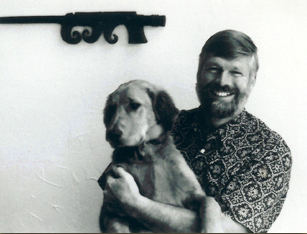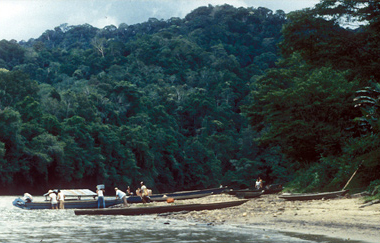William W. Bevis is a professor emeritus of English at the University of Montana in Missoula, retired since 2003. He has published books on the poetry of Wallace Stevens—Mind of Winter: Wallace Stevens, Meditation, and Literature (Pittsburgh: University of Pittsburgh Press, 1988)—and on Montana cultural history—Ten Tough Trips: Montana Writers and the West (University of Washington Press, 1990), and a novel, Shorty Harris, which he says has earned obscurity. He spent a year upriver in Borneo with hunting-gathering tribes before the logging, and his environmental book, Borneo Log: the Struggle for Sarawak’s Forests (University of Washington Press, 1995) won a Western States Book Award. He was on the Editorial Board of The Last Best Place, a Montana anthology of writing edited by William Kittredge and Annick Smith. Wallace Stegner said of his book on Montana writers, Ten Tough Trips, “This book . . . comes as close as any book I know to defining a culture, the culture of the West.”
Ten Tough Trips includes a final chapter that should be of interest to students of Lewis and Clark. Entitled “Cooper: Then and Now,” the essay is about James Fenimore Cooper, who left New York for Paris in 1826, having read the Lewis and Clark Journals in the Biddle edition of 1814, and took with him biologist Edwin James’ narrative of Steven Long’s Expedition to Pikes Peak of 1819-20. In Paris, Osage Indians waved from the balcony of their hotel to crowds below, before their private exhibition at the Royal Palace. Cooper returned with the first novel set in the American west, The Prairie, and those expedition journals, seen from the distance of Paris, produced a surprisingly clear-headed and unromantic view of “the west.”
Contributions
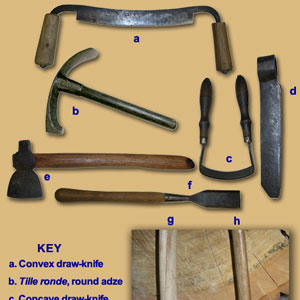
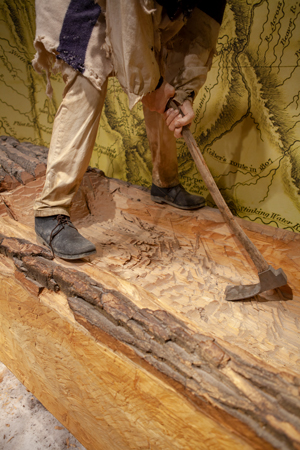

William Bevis summarizes his eight-part series on the design of the dugout canoes built by the expedition.
A glossary of boating terms useful in understanding the design, building, and paddling of dugout canoes are here defined.
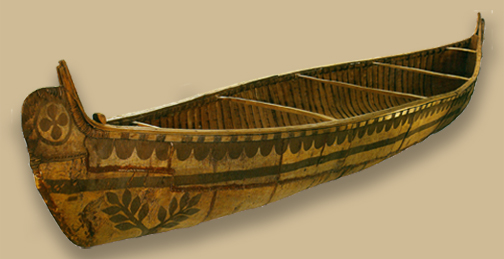

The task was to haul supplies upstream. Lewis wanted light boats, and he, Clark and Gass would also have wanted efficient boats. This author expects that by the time the Lewis and Clark party got to the Snake, there was nothing primitive about either their canoes or their canoeing.
Testing Dugout Canoes
by William W. Bevis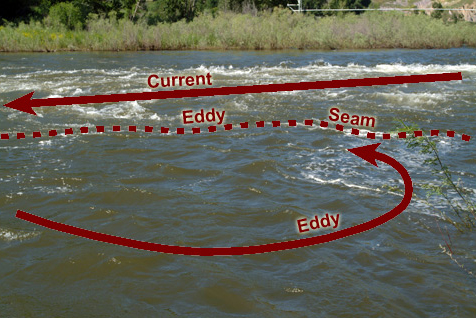

No one had tested modern replicas in demanding conditions: upstream ferries and eddy seam crossings in high water—canoeing techniques the Lewis and Clark party probably used many times a day. How were these dugouts shaped? How did they behave in river conditions?
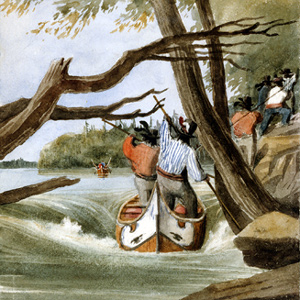

Details from the journals up through the Missouri Breaks in high water, from near the Musselshell River on 13 May 1805, to the Marias, 2 June 1805, are examined. One can only appreciate their handling of the canoes in the context of their daily trials.
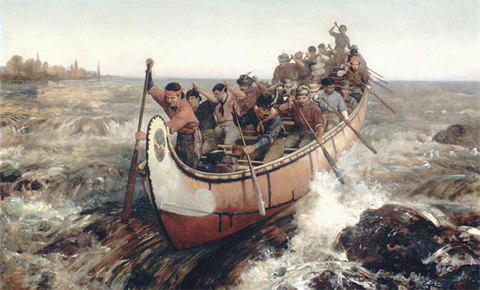

We know that the canoes of their day, white and Indian, were not necessarily rough or primitive, and that Clark and Lewis had seen a lot of them. The expedition included enough experienced canoeists to teach everyone how to paddle.
The Dugout Canoes of Lewis and Clark
by William W. Bevis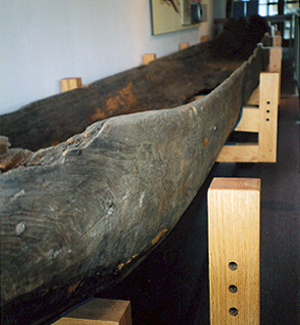

A mythology of “primitive” canoes, heavy and crude, and of primitive canoeing, has gradually taken hold in Lewis and Clark scholarship, and is here revised. This essay examines their canoeing as well as their canoes.
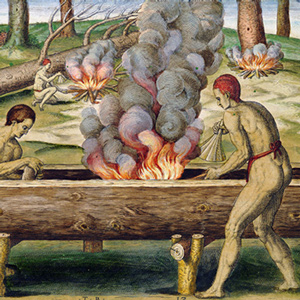

The author lists every incident in all the journals, yielding information about the expedition’s boats and boating, especially concerning the canoes.


Most of the “replica” Lewis and Clark dugout canoes used by re-enactors and sitting in parks or museums are roughly carved, crudely shaped, and weigh from 800 to 3,000 pounds. Actual nineteenth century dugouts can be smoothly finished, finely shaped, and weigh under 200 pounds.
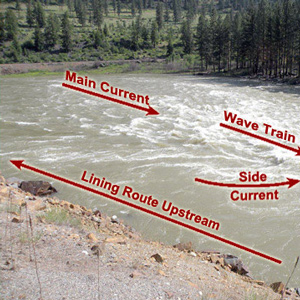

Using interactive pictures of common river conditions, the reader is given an idea of how the boatmen read the river and chose their lines. These conditions—or a prediction of them—were also considered when the Corps designed and built their dugouts at Fort Mandan.
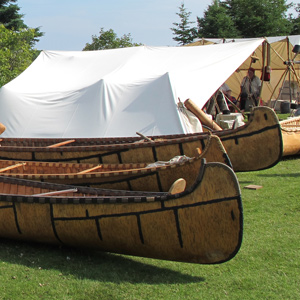

Based on historic designs, handling, and cargo capacity, the author proposes a dugout with round sides and a squared-off bottom. However, finding a tree 36″ in diameter and clean of major limbs for 33′ upwards, was probably not that easy.
Experience the Lewis and Clark Trail
The Lewis and Clark Trail Experience—our sister site at lewisandclark.travel—connects the world to people and places on the Lewis and Clark Trail.
Discover More
- The Lewis and Clark Expedition: Day by Day by Gary E. Moulton (University of Nebraska Press, 2018). The story in prose, 14 May 1804–23 September 1806.
- The Lewis and Clark Journals: An American Epic of Discovery (abridged) by Gary E. Moulton (University of Nebraska Press, 2003). Selected journal excerpts, 14 May 1804–23 September 1806.
- The Lewis and Clark Journals. by Gary E. Moulton (University of Nebraska Press, 1983–2001). The complete story in 13 volumes.
